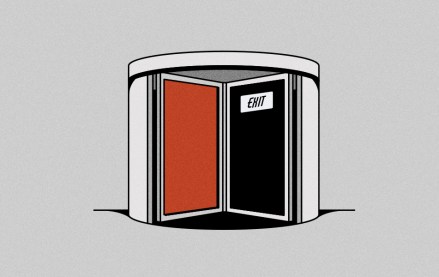Future of Marketing Briefing: Bold call – the legacy influencer agency doesn’t fit the new market

This Future of Marketing Briefing covers the latest in marketing for Digiday+ members and is distributed over email every Friday at 10 a.m. ET. More from the series →
To see where the value is concentrating in any industry, follow the acquisitions. In the creator economy, it is gravitating toward software that standardizes how brands find and work with creators. The influencer shops that once drew investor enthusiasm are now ceding ground to tools that promise scale, predictability and a cleaner margin story.
Agentio CEO Arthur Leopold made that clear this week as he laid out why his company just landed $40 million in fresh funding.
“Investors as well as brands have had the realization that a somewhat tech enabled agency didn’t enable a true level of scale that the brands needed,” said Leopold. “If you look at like the 10-ish billion dollars of brand direct to creator spend, that’s very constrained. It’s less than 2% of the $800 billion of digital media spend running through platforms.”
Like the social shops that came before them — and the mobile-first boutiques before that — influencer marketing agencies were built to serve a moment. Not necessarily the next.
That may sound blunt. It’s really just pattern recognition. The tells are sitting in plain view.
In September, content creators complained on social media about not receiving payments from The Corner for work done prior to the agency’s communications business going into liquidation. Months earlier, News U.K. sold its creator shop The Fifth to Brave Bison. Around the same time Public Square Global filed a $50 million breach-of-contract suit against Revolve in April over unpaid fees tied to more than 80 influencer deals. Meanwhile, LinkedIn has turned into a steady stream of complaints from creators and contractors chasing overdue invoices from agency intermediaries.
On their own, these incidents are warning signs rather than an outright collapse. The problem is that they’re not isolated. They’re unfolding as Agentio — a programmatic buying platform for creator campaigns — raised $40 million. They’re happening as Whalar Group moved further up the stack with a $20 million acquisition of the Business of Creativity earlier this year. And all of this is landing at a moment when influencer briefs now exceed what the average agency can realistically execute.
“Once the platforms built the pipes for paid creator ads, brands started expecting cultural reach and measurable performance in the same campaign,” said Jamie Gutfreund, founder of creator marketing firm Creator Vision. “That’s a media mandate. Agencies built for talent work struggle in that environment because paid creator media is always-on, signal-rich and built to optimize. In this world, access isn’t the advantage anymore. Data is.”
Taken together, these flashpoints will feel familiar to anyone who watched social agencies burn out in the 2010s. The Population, Virtue, Buddy Media, Context Optional, Syncapse — a roster of once-promising shops now relegated to footnotes through closures, roll-ups or slow fades into irrelevance.
The influencer and creator agency class is following the same script. They grew up by acting as intermediates in a fragmented market — brokering deals, manually sourcing talent and running slow, service-heavy processes that treated creators like traditional talent. They relied on gatekeeping: they owned the Rolodex, controlled access and marked up the world. That advantage is disappearing. Managers now own the relationships. Creators behave like media companies with their own teams. Brands are shifting to advocacy and community models. And with AI automating sourcing, outreach and reporting, the old brokerage layer isn’t thinning out — it’s collapsing as in-house teams and platforms swallow its core functions.
What’s left is strategy, measurement, creative discipline and operational depth — the capabilities many of these agencies never fully built. Their generalist model made sense in the hypergrowth phase several years ago but it was never going to hold up once the market shifted toward scaled, integrated operating systems.
It’s why the M&A narrative around creator agencies has become so revealing. Whether it’s Accenture’s swoop for Superdigital or SAMY Alliance doing the same for Intermate, the shift is clear: creator agencies either evolve into structured media businesses or shrink into creative boutiques. The middle disappears.
Jim Houghton, a partner at M&A advisory firm Waypoint got at this in a recent chat with my colleague Sam Bradley. There’s still an appetite for creator and influencer agencies, he said, but the basis of valuation is changing with the market. The creators themselves were the asset. Now the asset is the ability to scale them, optimize them and slot them into a repeatable system.
“That sort of talent intermediary work, unless you’re dealing with the really high-end influencer creators, is going to be software-led,” said Houghton. “What’s more interesting is the emerging space that sits somewhere between a talent agency, a short-form video production outfit and a social agency. That triangle is where the sweet spot seems to be forming, though the financial models around it still look far from settled.”
Think back to Joule, Fetch, WeLoveMobile – the agencies that defined the early mobile boom before being absorbed into larger marketing services groups. The creator agency class is now tracking along the same curve.
“The influencer marketer’s role is dead,” said Jonathan Chanti, CEO of Reign Maker Group. “All the jobs they used to do — find people, curate them, reach out to them, nurture them, report on them — you can build an AI that does a better job of that right off the bat.”
He’s hardly a neutral observer — he has a new holdco to sell. Still, the way he’s chosen to position it is revealing. It points to a pivot in the industry’s center of gravity, and a recognition that the old agency model is no longer the default assumption.
In fact, Chanti likens Reign Maker Group to a specialized holdco: creators treated as media, managers as the core asset, and a set of rails — tech, accounting, legal and operations — that let managers operate as entrepreneurs. The idea is to remove intermediaries, consolidate fragmented supply and give marketers more direct, scalable access to talent. With separate units for strategy, celebrity work, manager enablement and education, he’s building a system built for rapid creator turnover and always on creator media — something, he said, traditional agencies were never structured to handle.
“I want to remove all the middlemen,” continued Chanti. “The buyer can come direct to source.”
It’s hyperbolic, sure. But it’s also where the market appears to be driving. Brands are already pushing in that direction.
“People have suddenly realized that the idea of paying someone to pretend to like your brand isn’t actually going to sell much stuff,” said Paul Archer, CEO of marketing consultancy Duel.
What comes next is less an extinction event than a reordering. It’s about who’s structurally positioned to deliver creator and influencer marketing in a world where efficiency has overtaken novelty.
Numbers to know
$37 billion: The IAB’s projection for U.S. creator ad spend in 2025
$15 billion: The amount that Microsoft and Nvidia are planning to invest in Anthropic
$1.9 billion: How much Adobe is paying to acquire digital marketing platform Semrush
$10 million: The cash injection from former Twitter CEO Jack Dorsey, into nonprofit And Other Stuff which has restored the app Vine under the name DiVine
What we’ve covered
The CMO-CCO split is becoming a corporate fiction
Marketing and communications used to be very separate departments within agencies and brands, but as time goes on, the responsibilities are merging under one roof.
LinkedIn’s head of ads measurement, Jae Oh, caught up with Digiday to explain why ‘LinkedIn is expensive’ is one of the biggest misconceptions about the platform.
An anatomy of the trust fault line running through Amazon’s ad ambitions
While Amazon has big plans for its ad platform to become the place to buy ads – not just in its own ecosystem, but the wider web, a thorn in that plan, is the issue around trust and concerns from advertisers.
‘We’re in a league of our own’: How X is planning to take over the World Cup, starting with Draw Day
Ahead of the World Cup next year, X has teamed up with Fabrizio Romano to create exclusive short form content, around Draw Day on Dec. 5. The event will be a test run for how the platform plans to monetize the tournament next year.
What we’re reading
OpenAI’s Fidji Simo plans to make ChatGPT way more useful—and have you pay for it
Wired’s Zoë Schiffer sat down with Fidji Simo to discuss the path for ChatGPT.
Meta wins landmark antitrust case over Instagram, WhatsApp acquisitions
On Tuesday, a U.S. federal judge ruled that Meta didn’t break any antitrust rules by buying Instagram and WhatsApp, a victory which means Meta won’t be forced to sell off the apps, according to Axios.
Meta’s chief revenue officer exits in broad leadership reshuffle
Meta is doing a rejig of its leadership as the pressure around AI mounts, according to Bloomberg. CRO John Hegeman leaving is one of a number of changes at the company.
More in Marketing

Pitch deck: How Amazon is recasting Twitch as a core part of its CTV pitch
Amazon is positioning Twitch as a defining asset in its CTV ambitions.

Netflix transforms former mall department stores into experiential venues
The location in Dallas opens this week, and one at the King of Prussia mall near Philadelphia opened last month.

Future of Marketing Briefing: AI has created a new talent paradox in programmatic agencies
The job isn’t execution anymore. AI handles that. The job is judgement.





